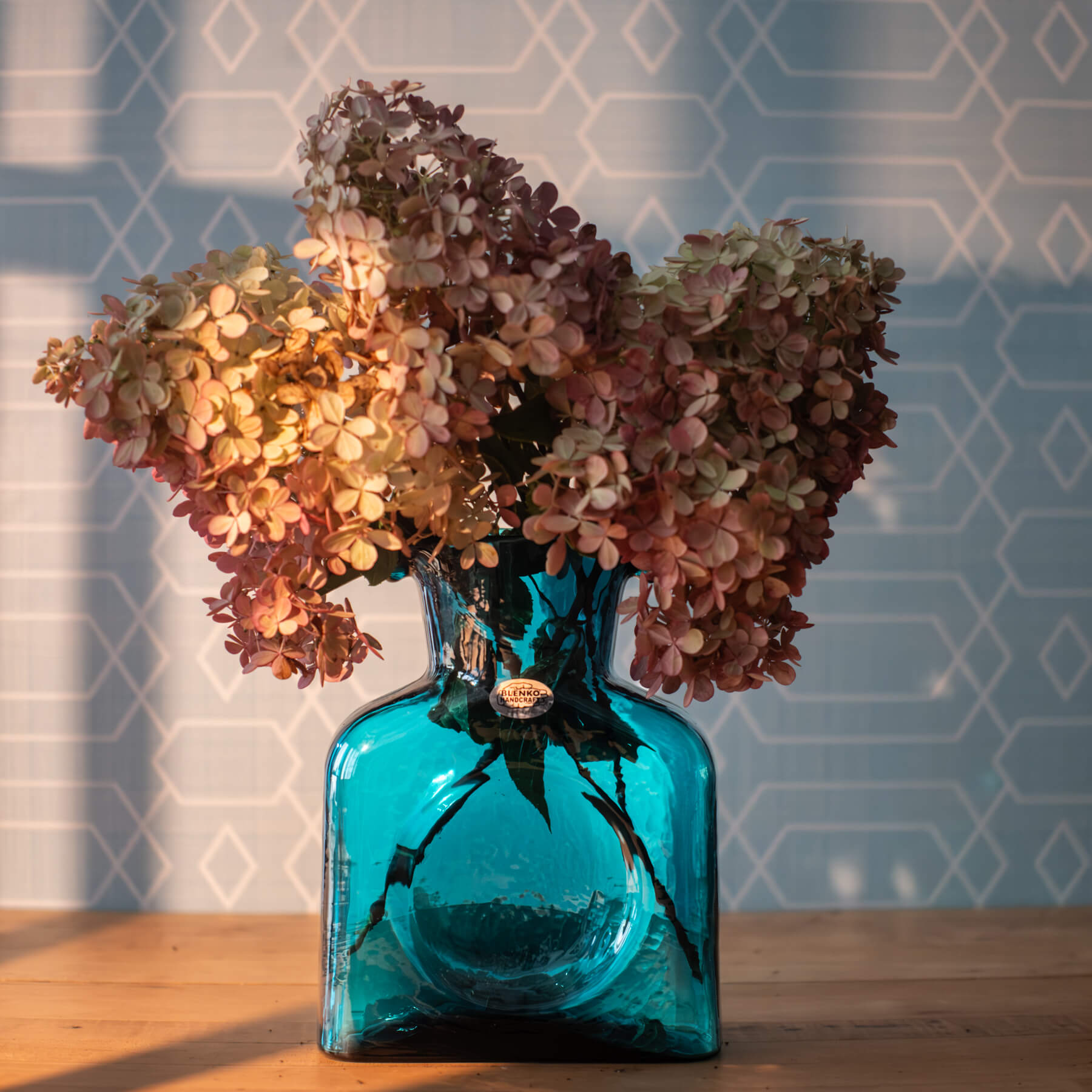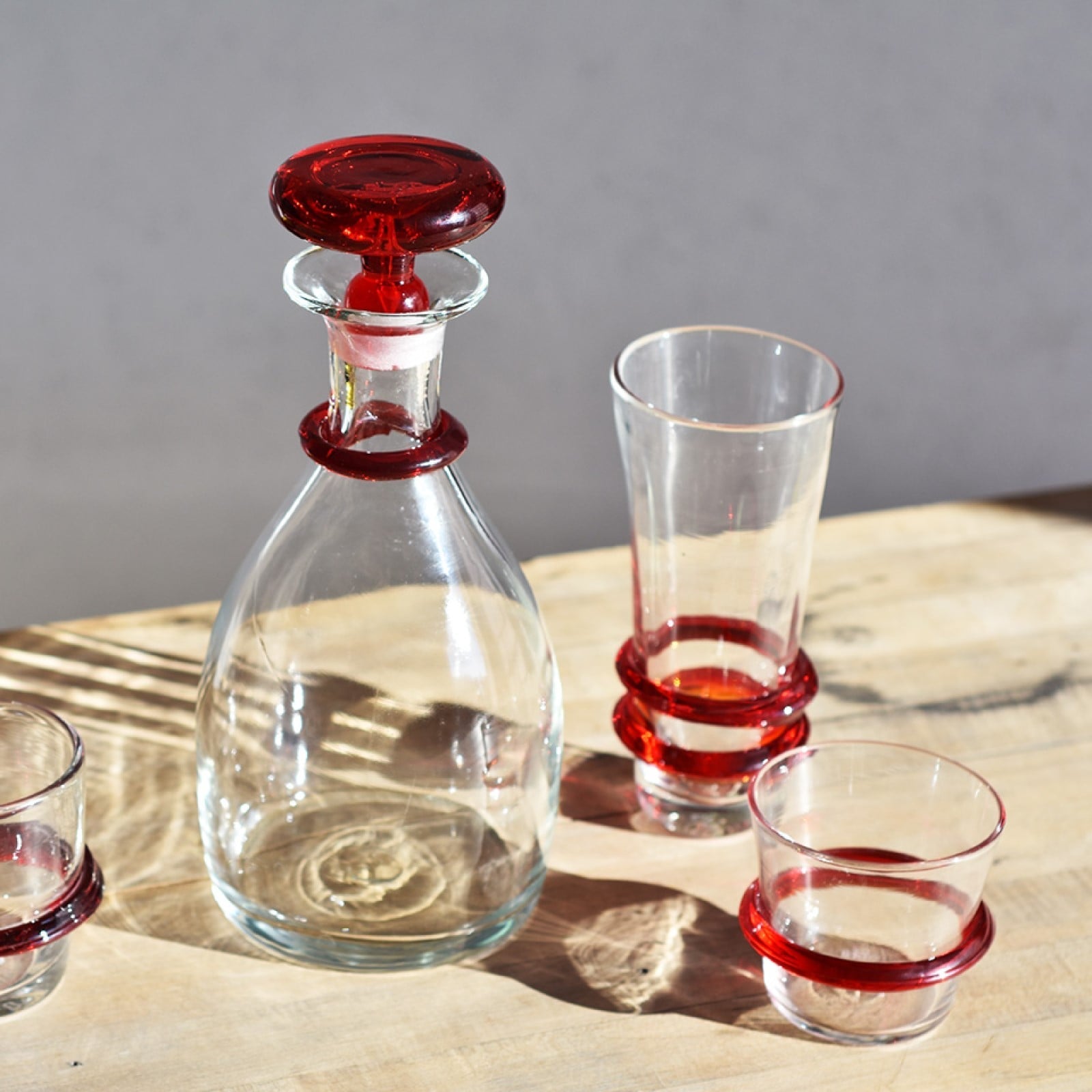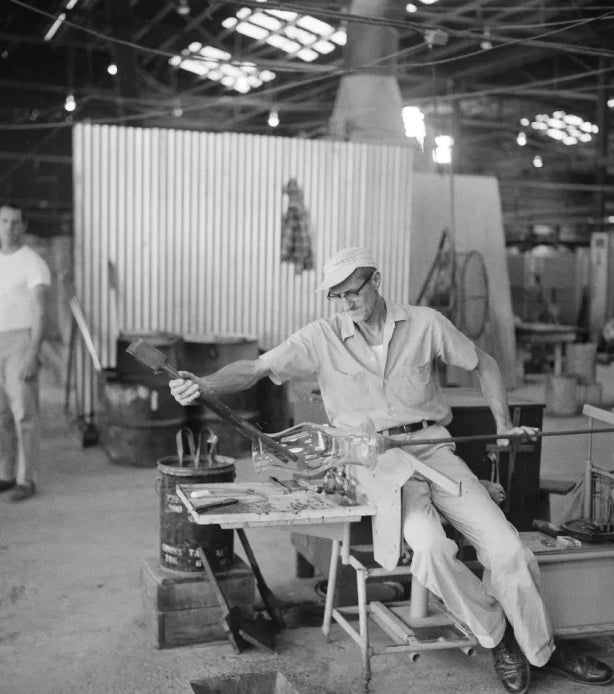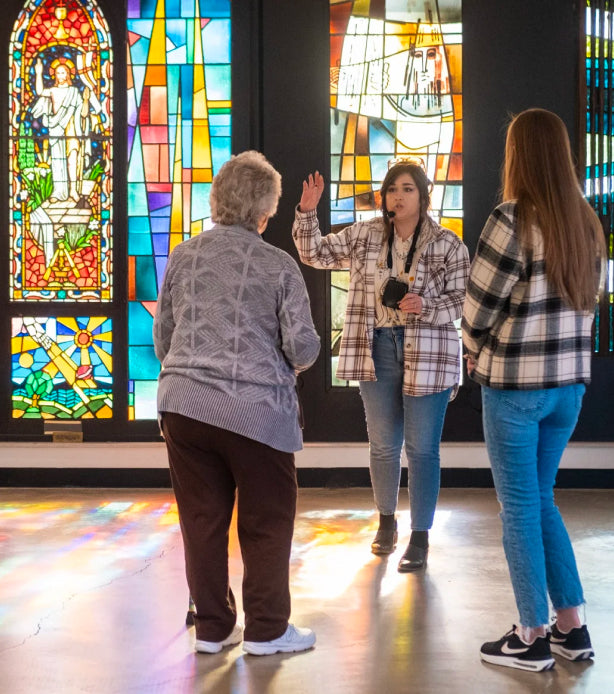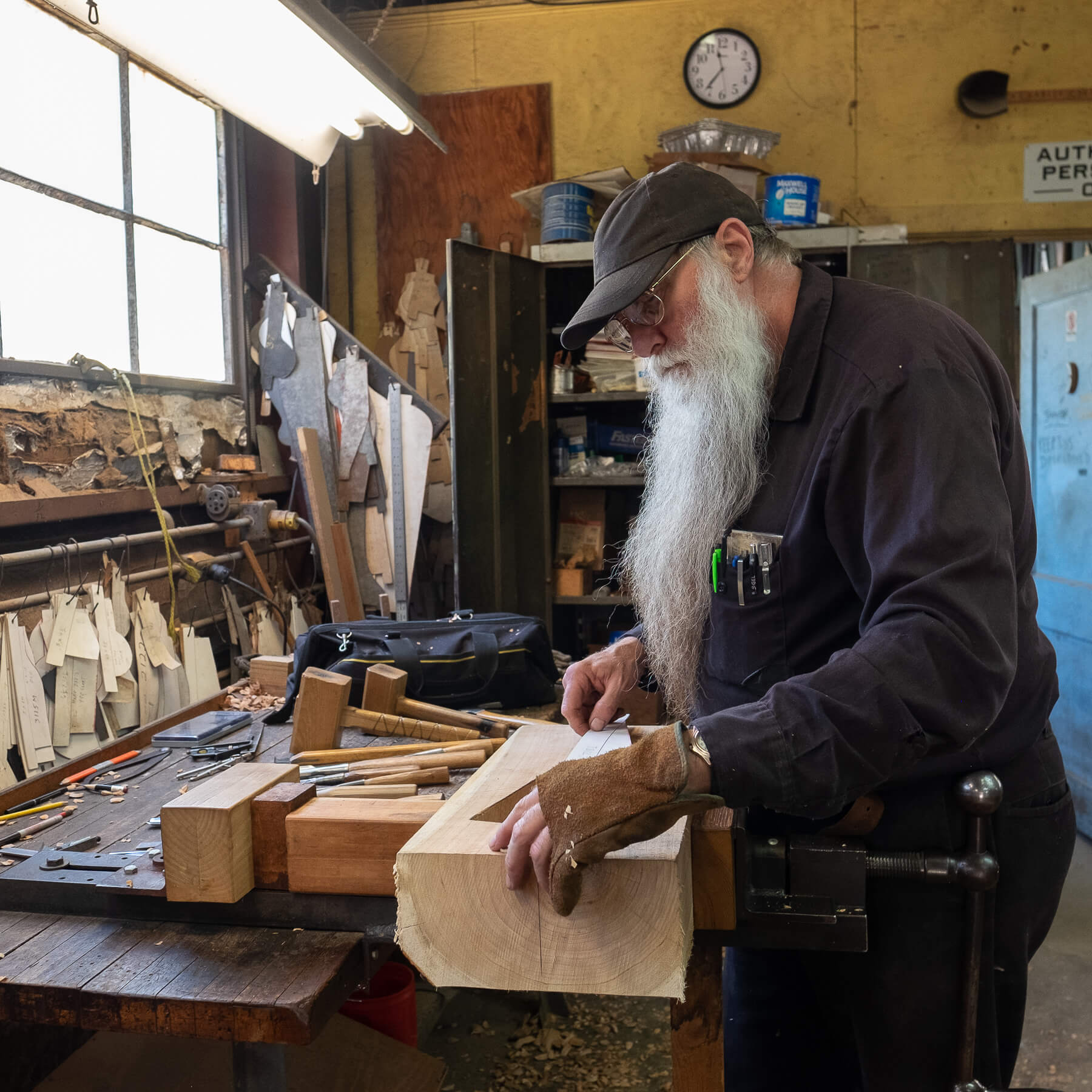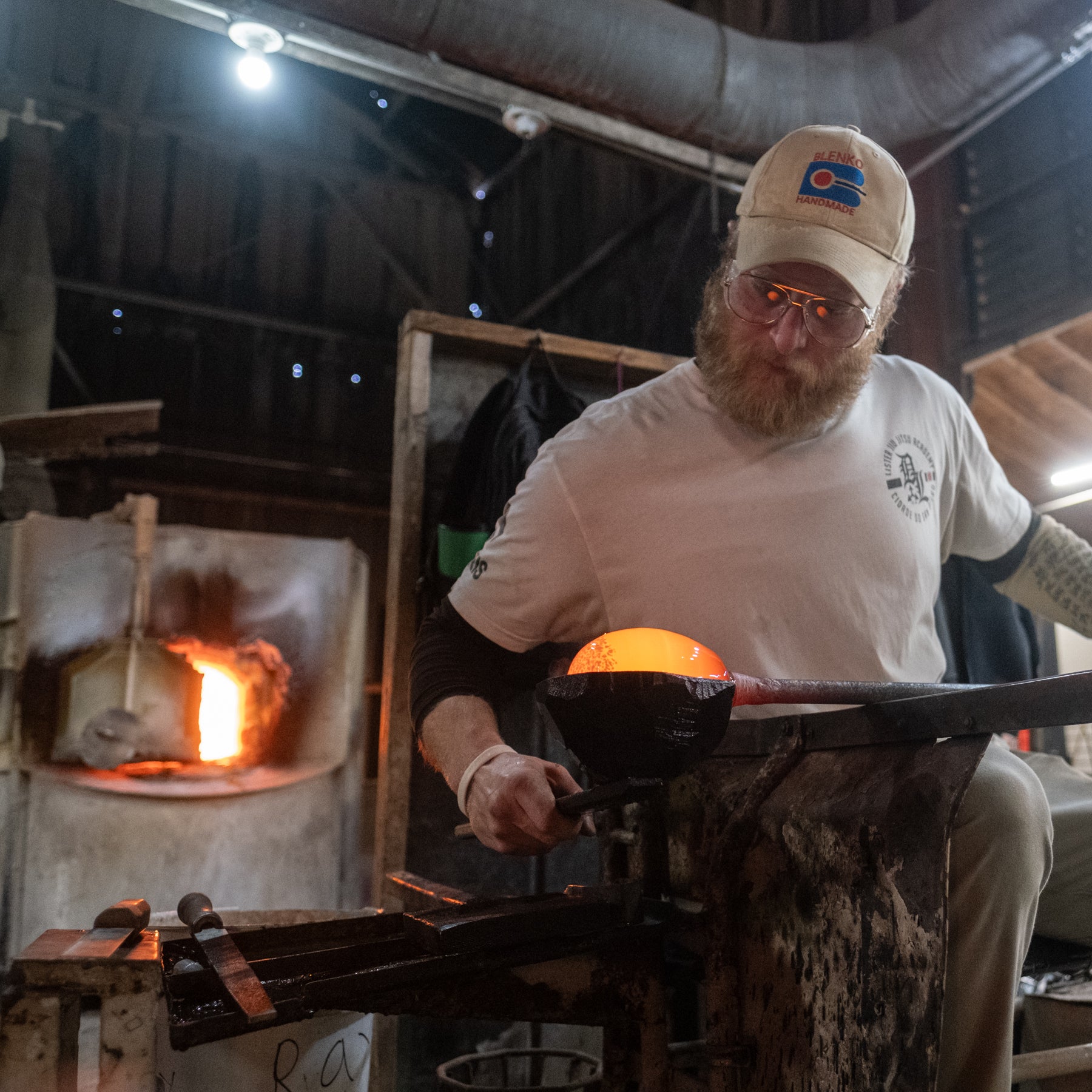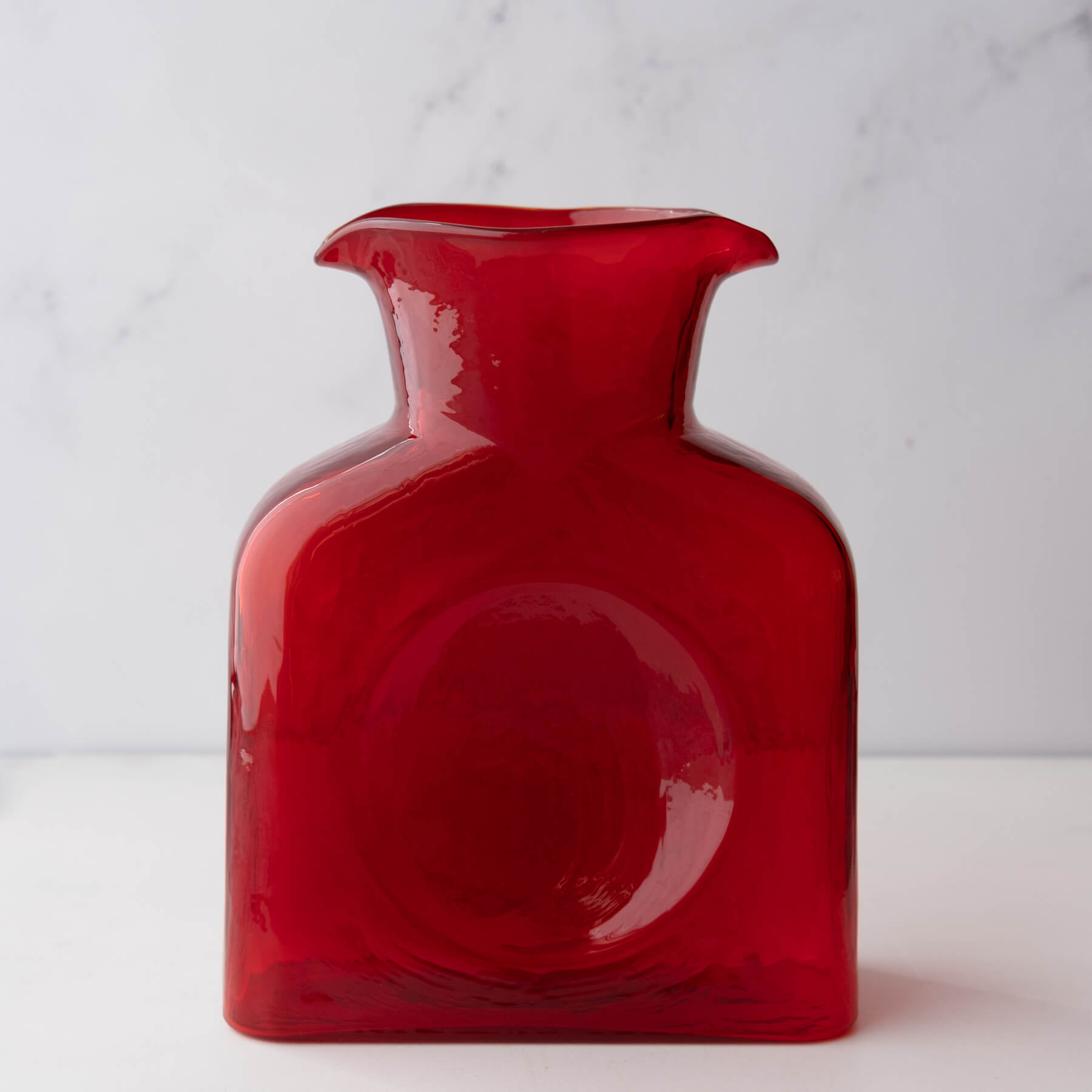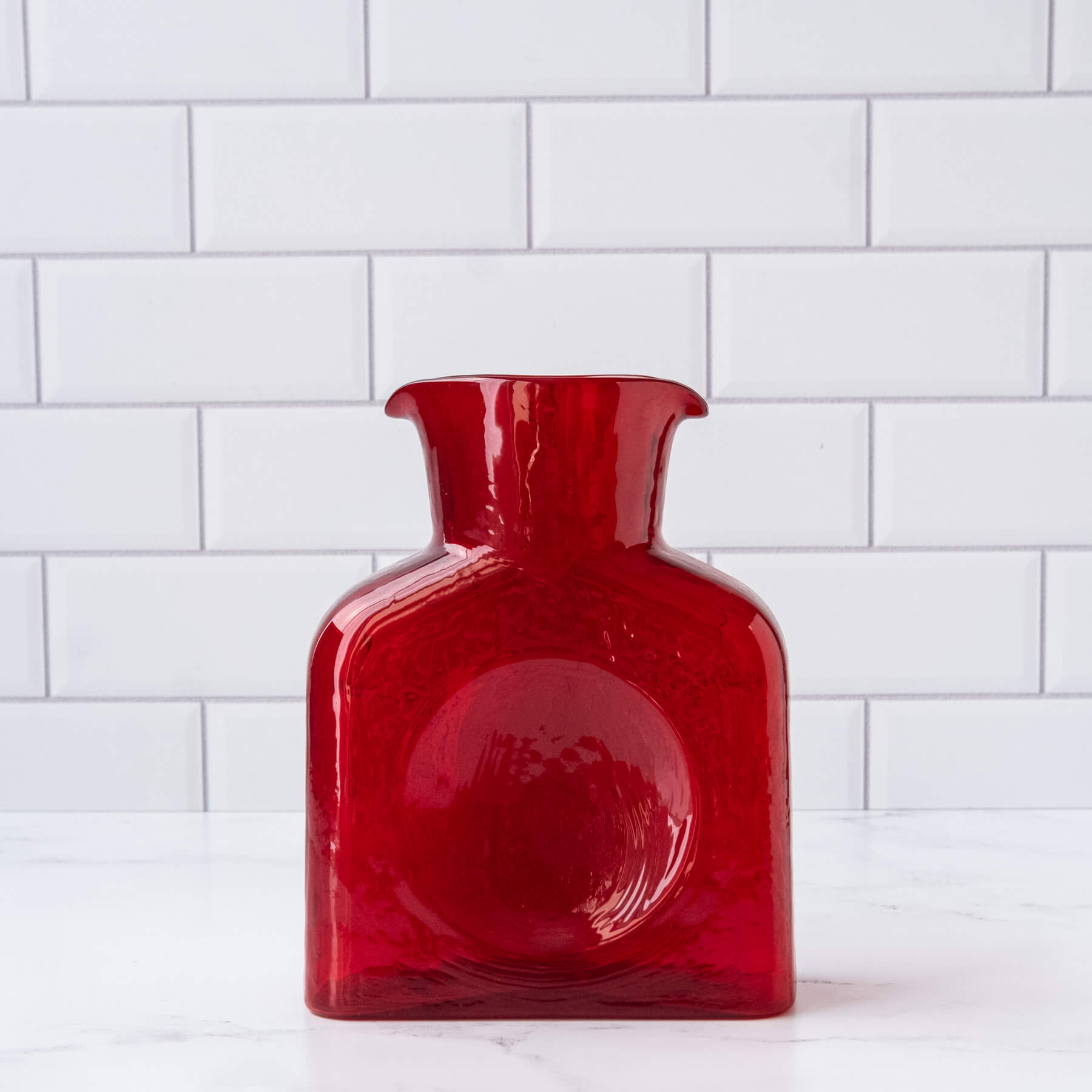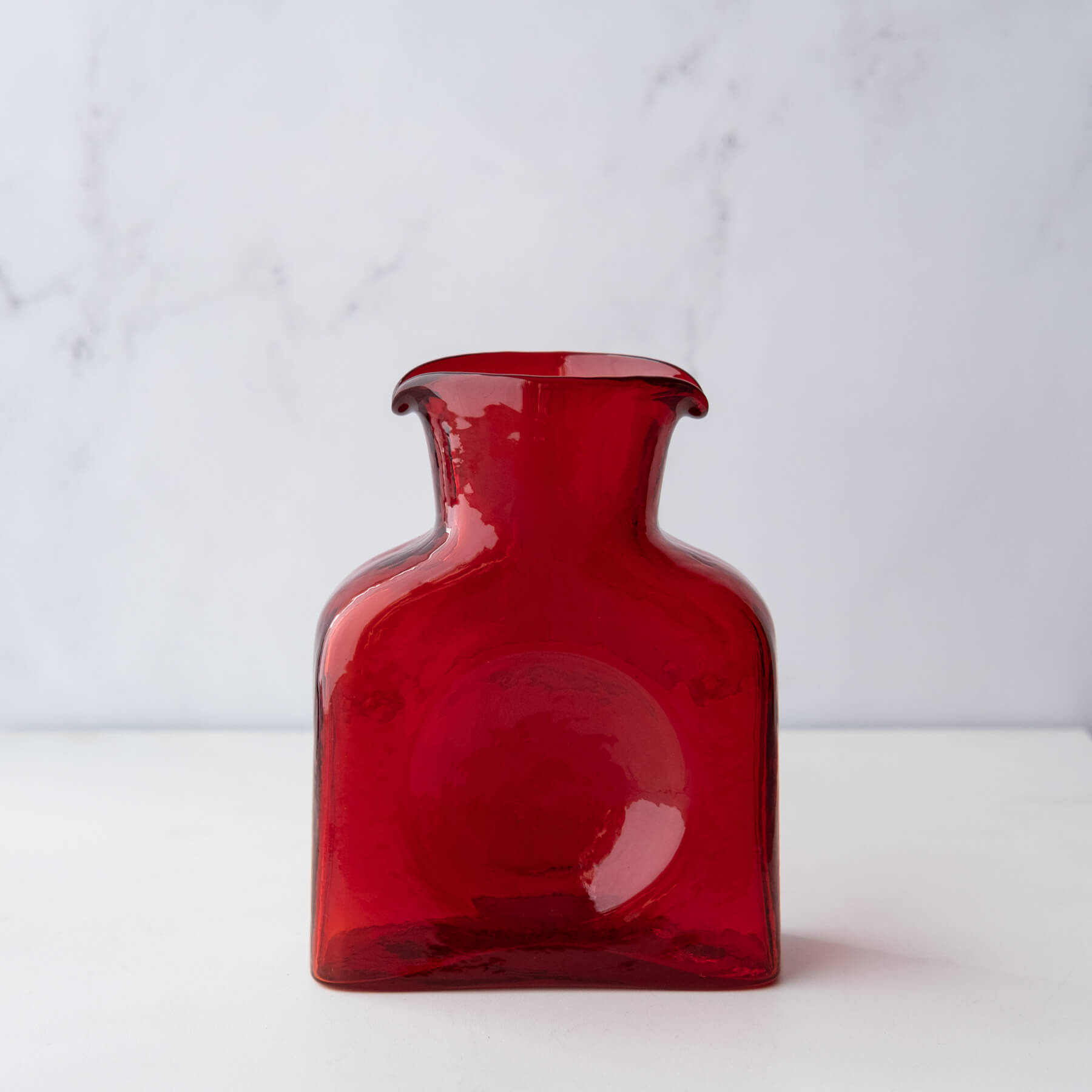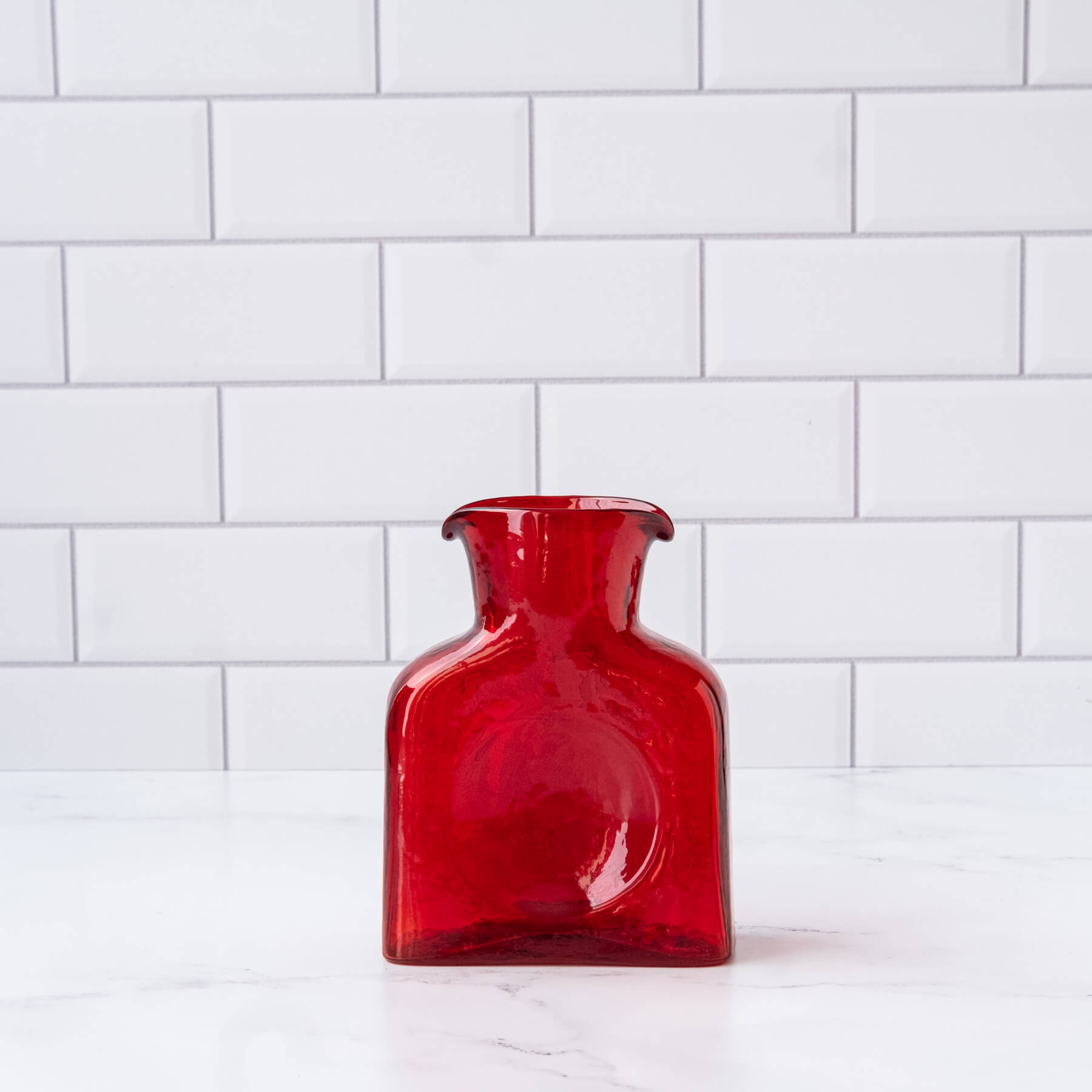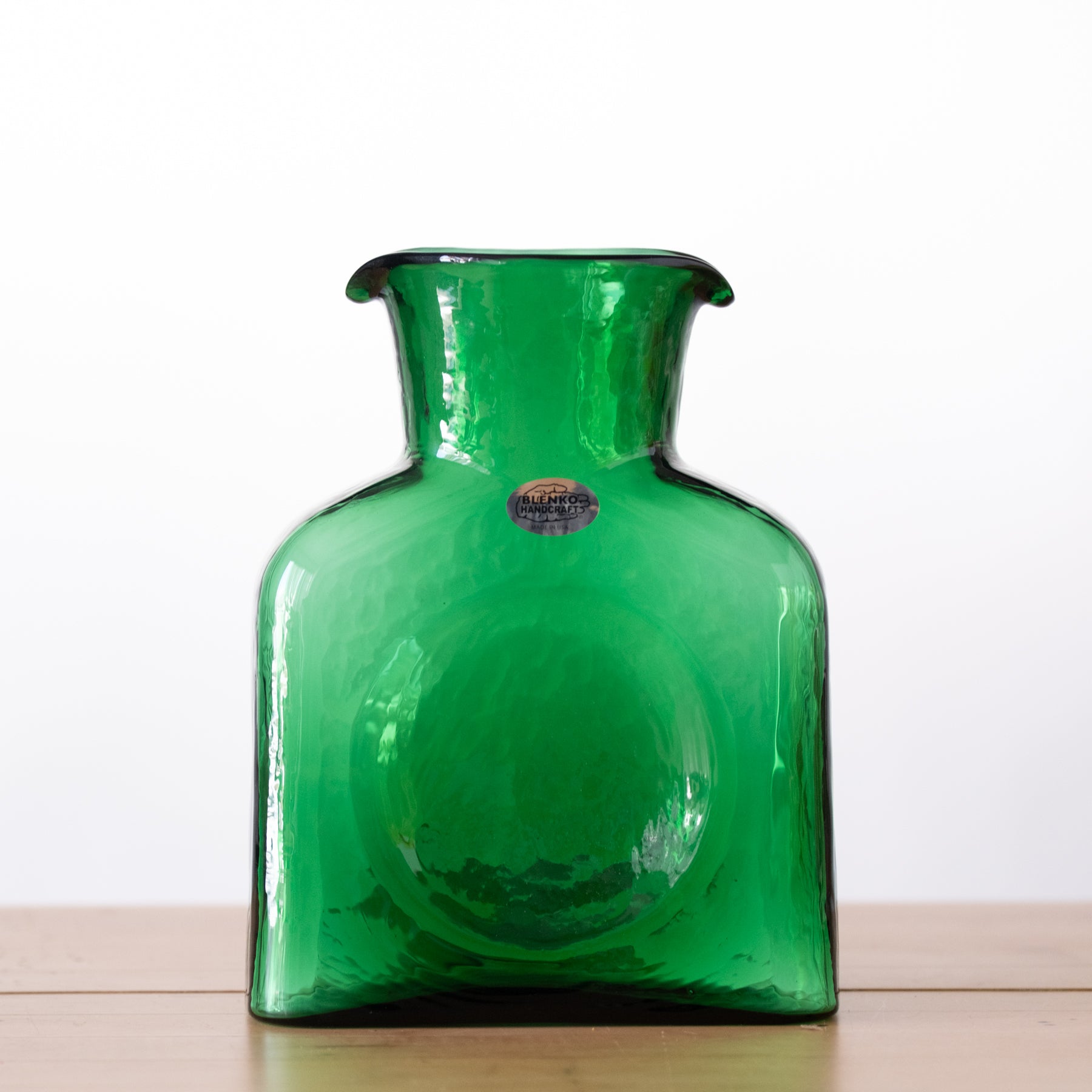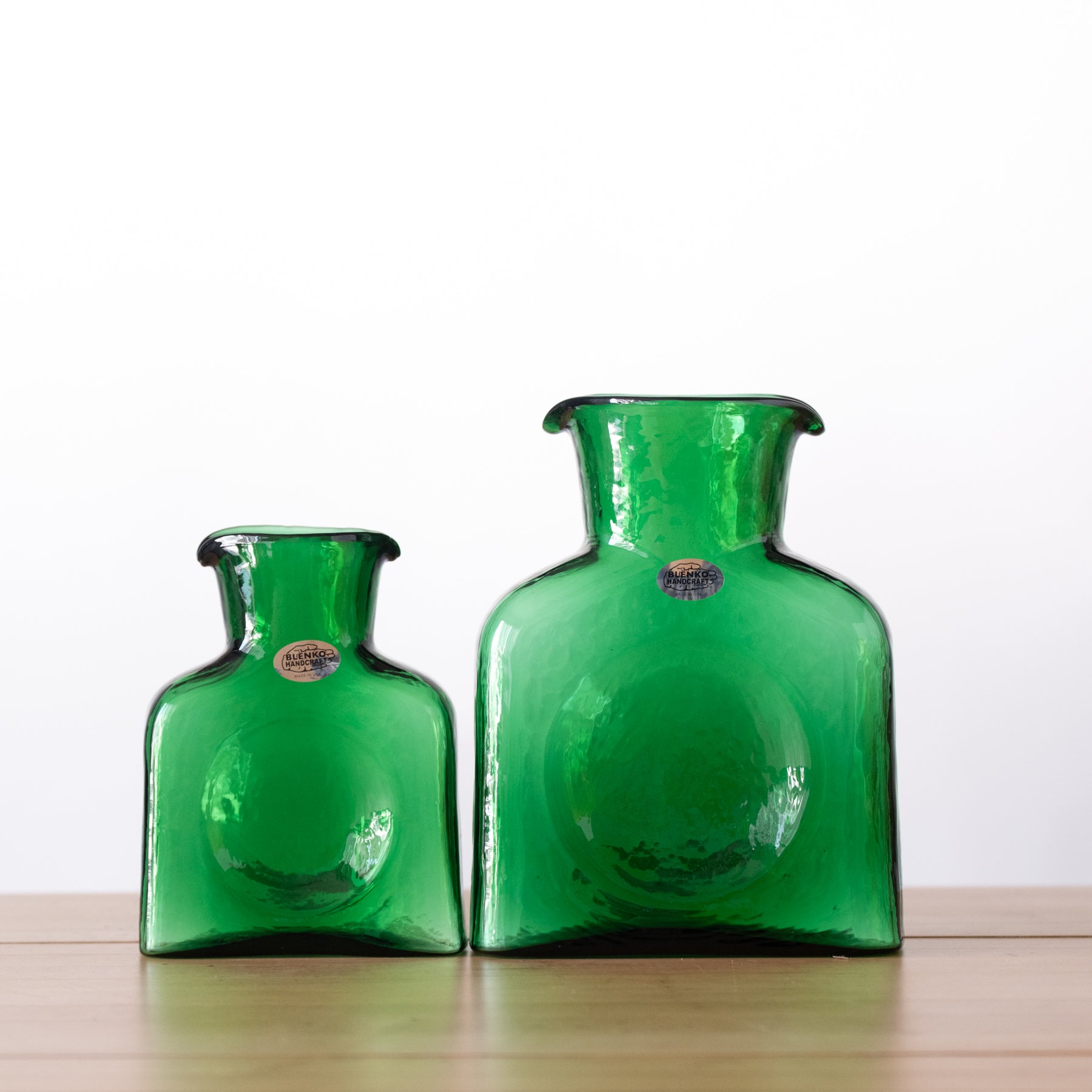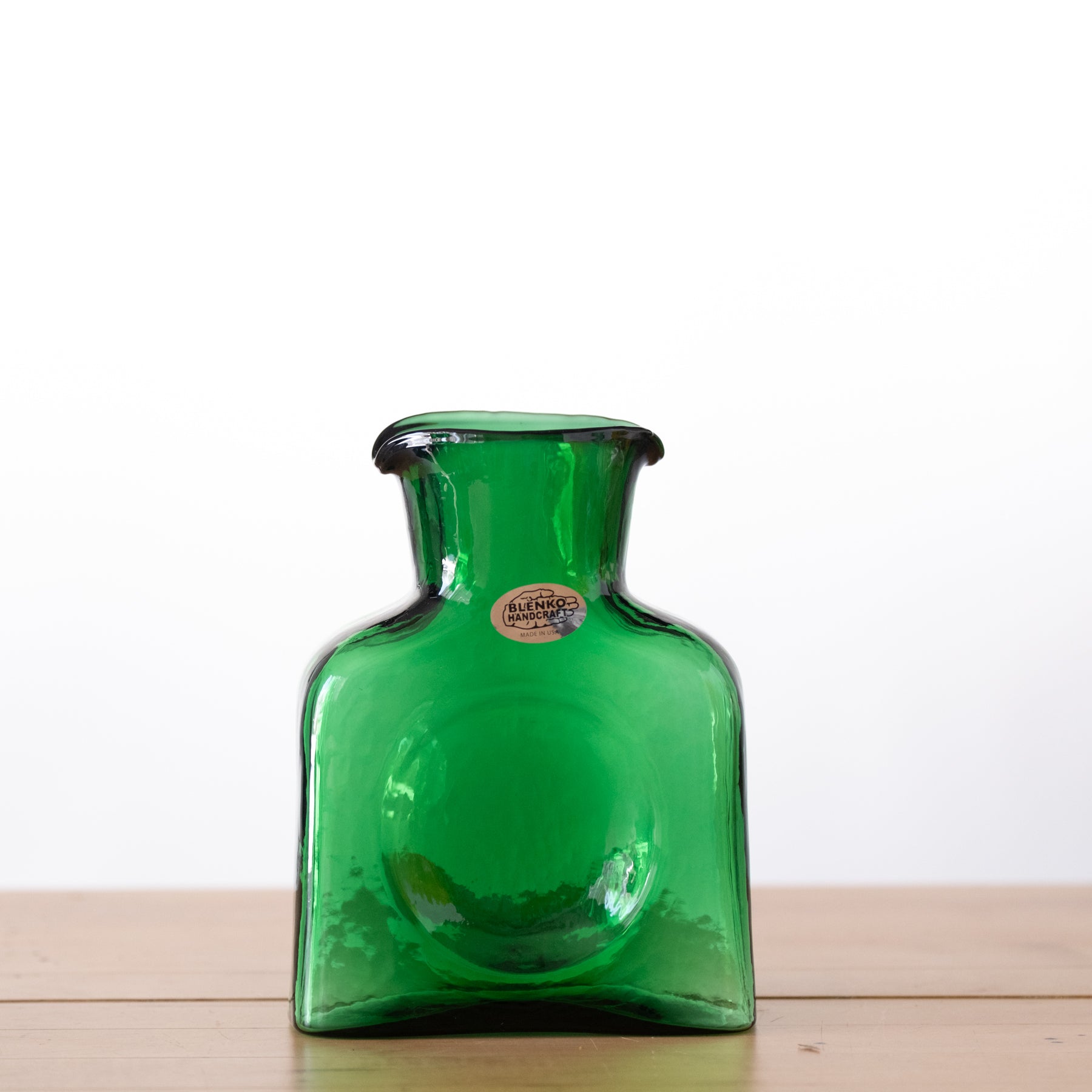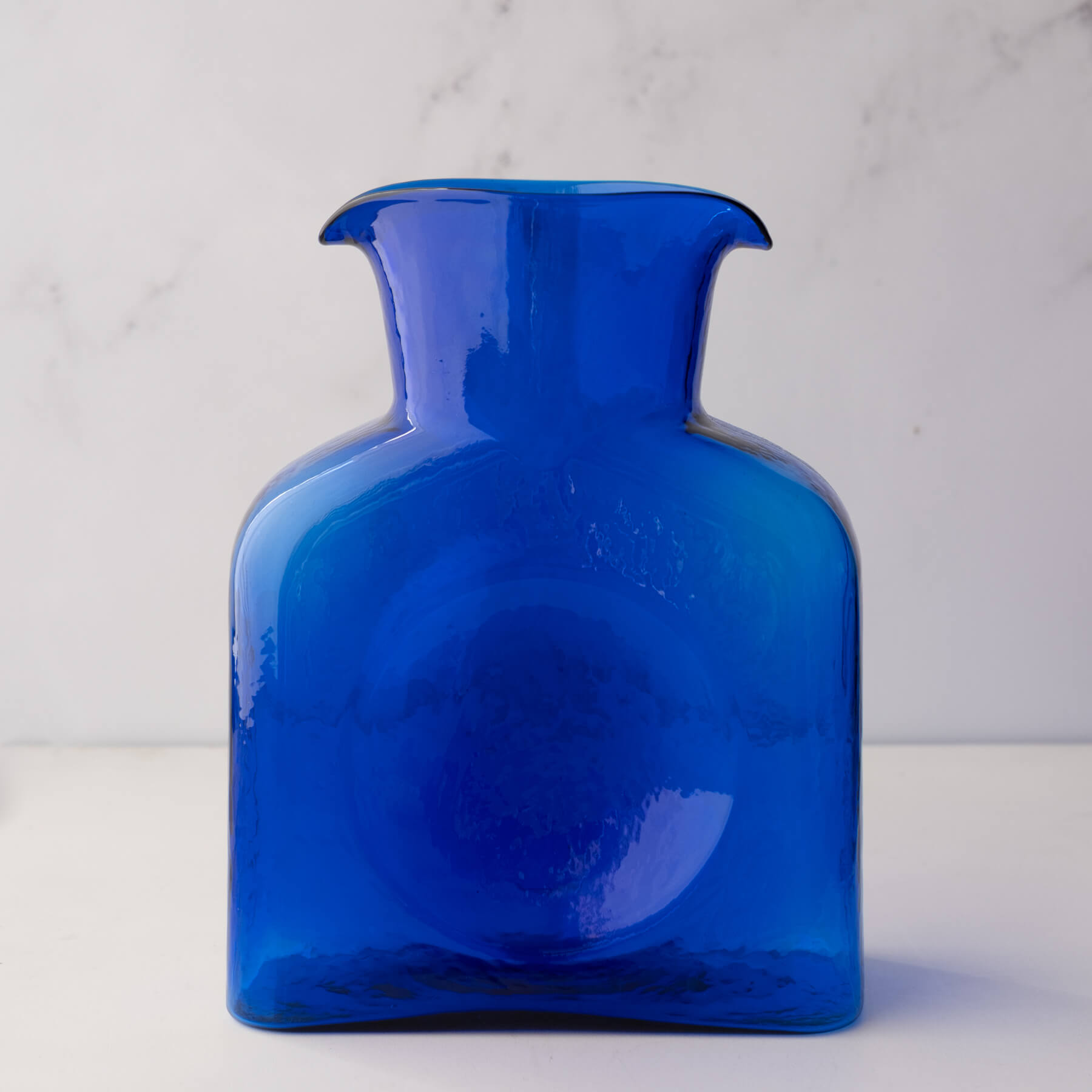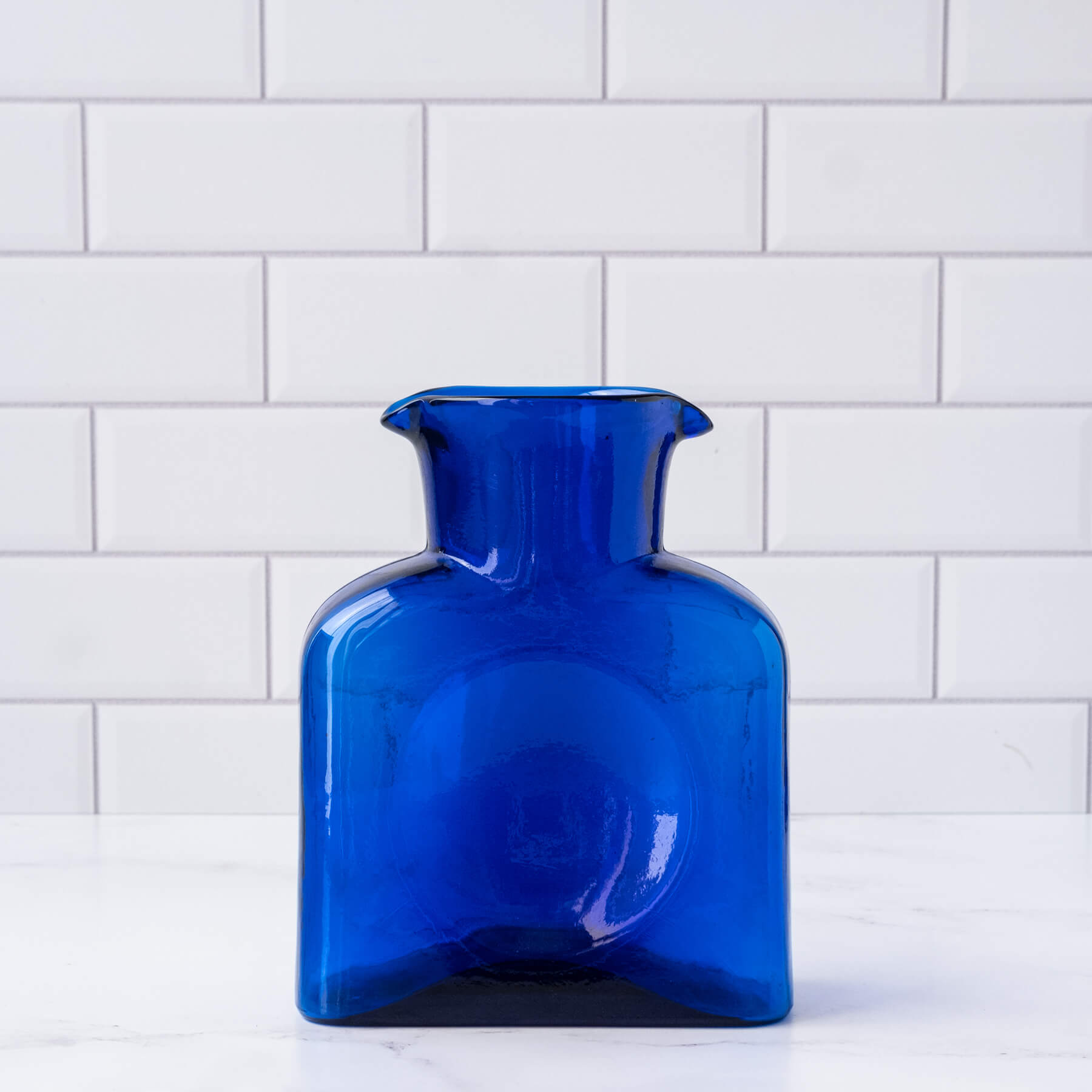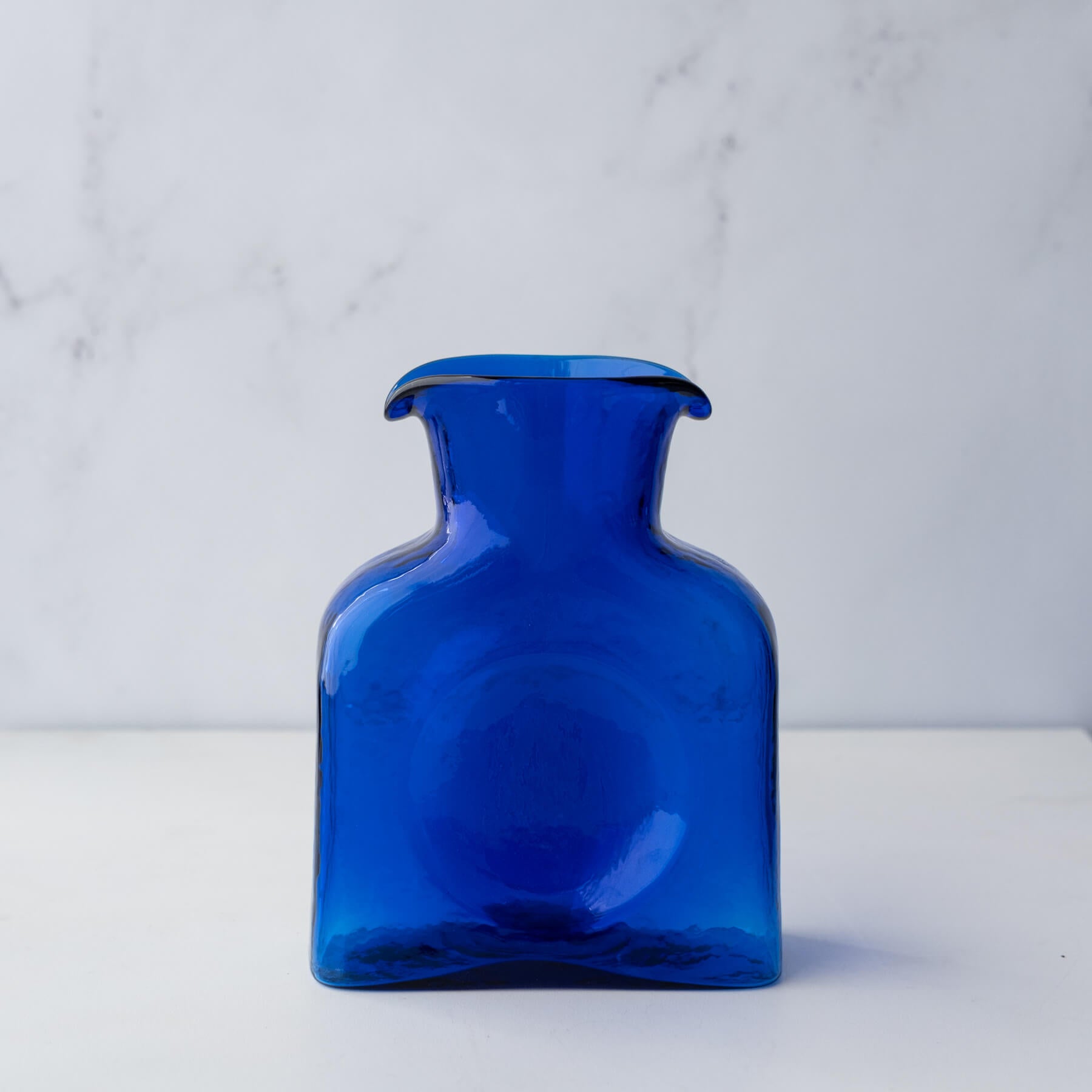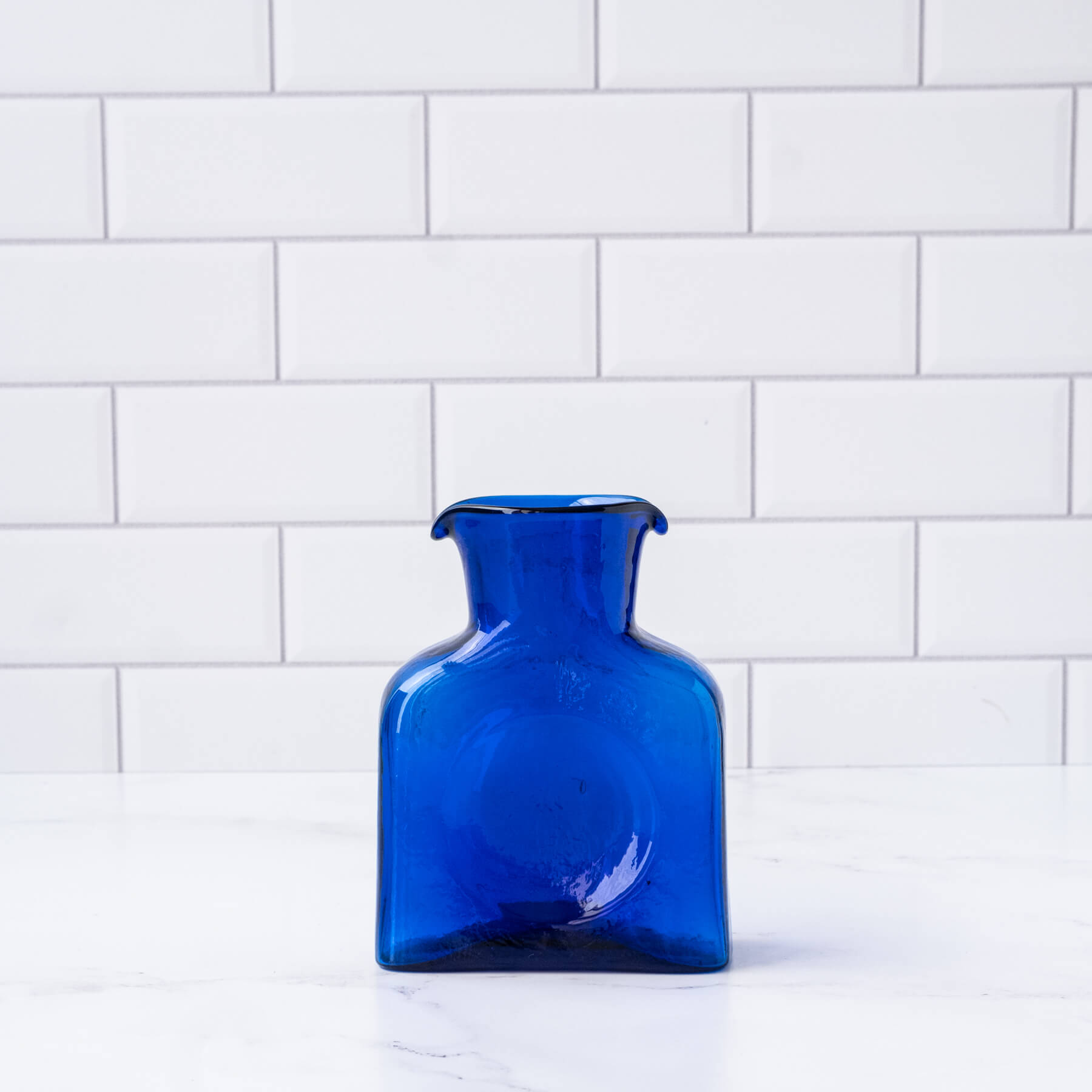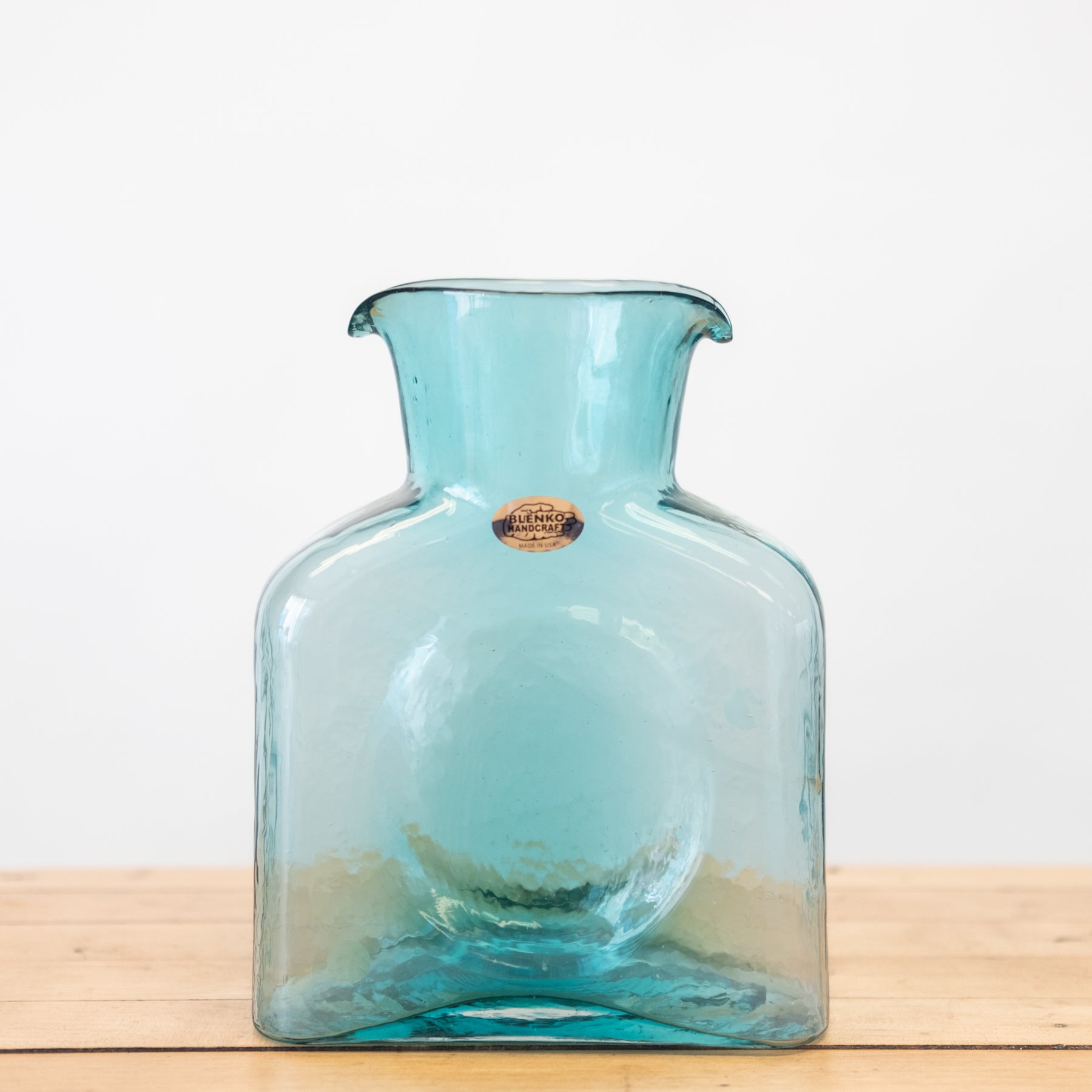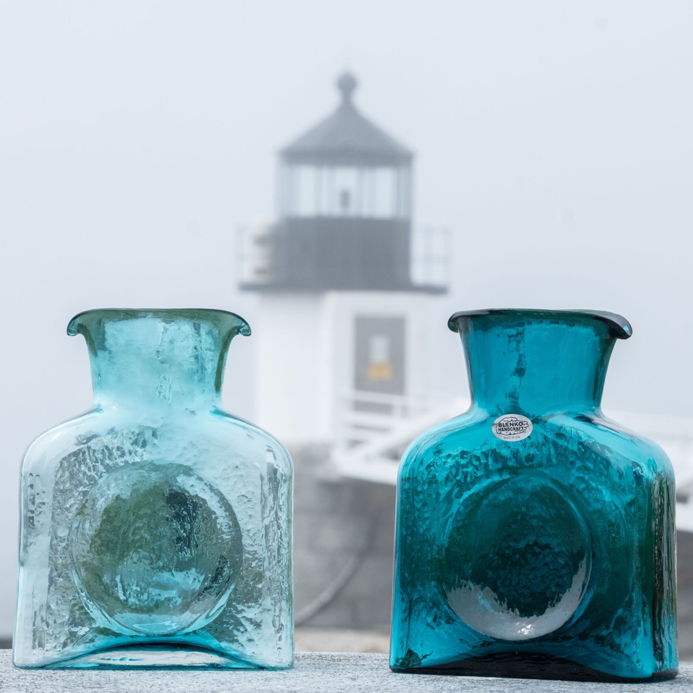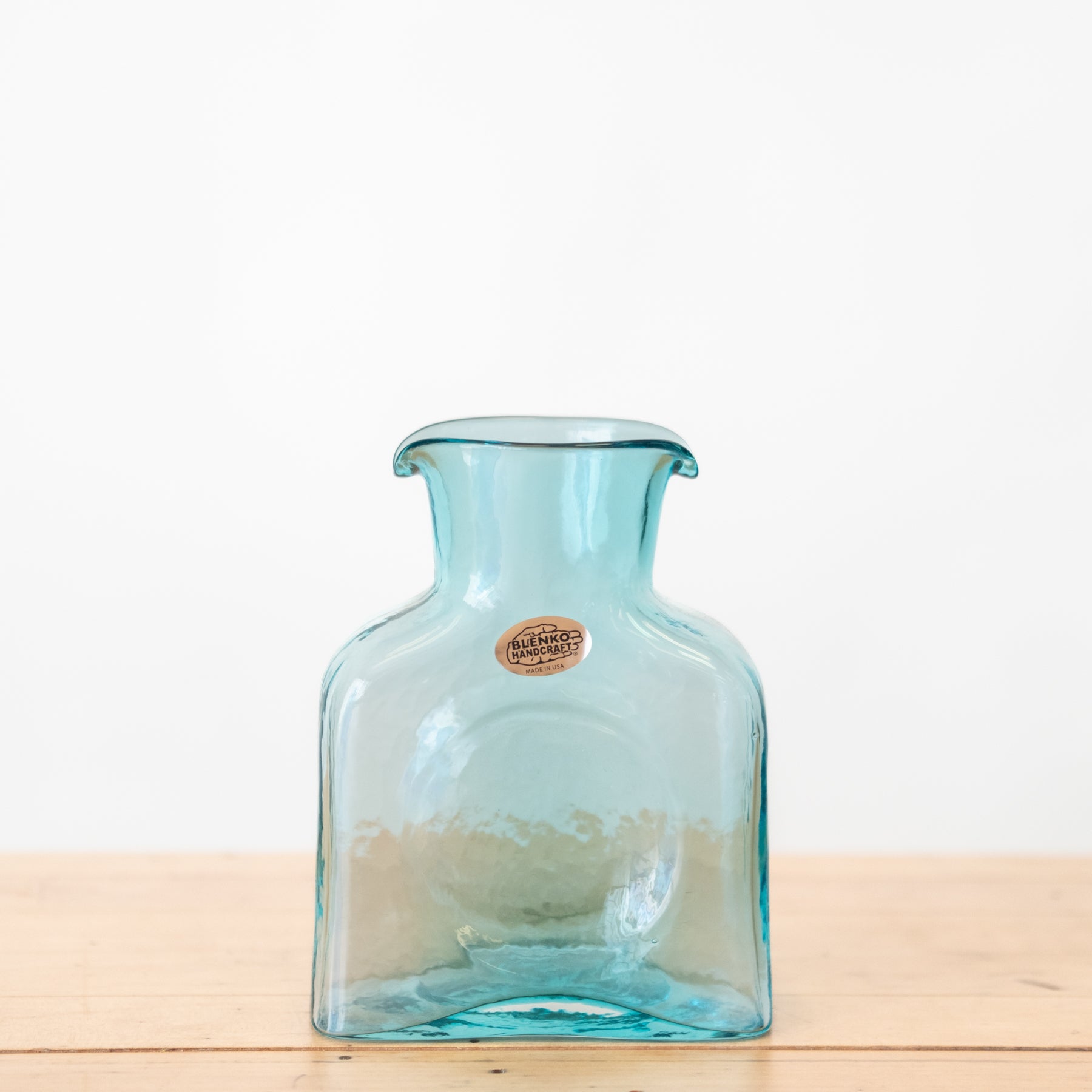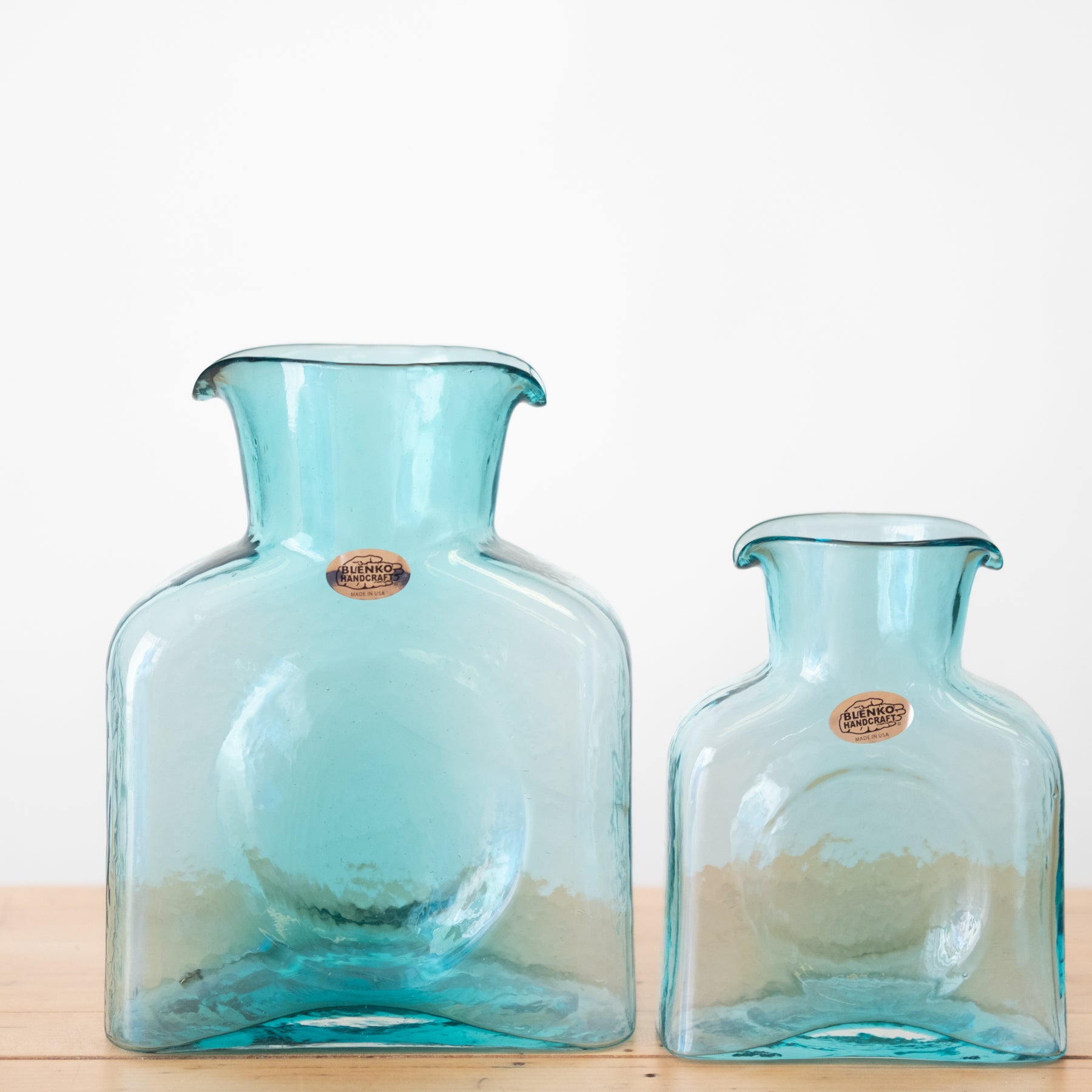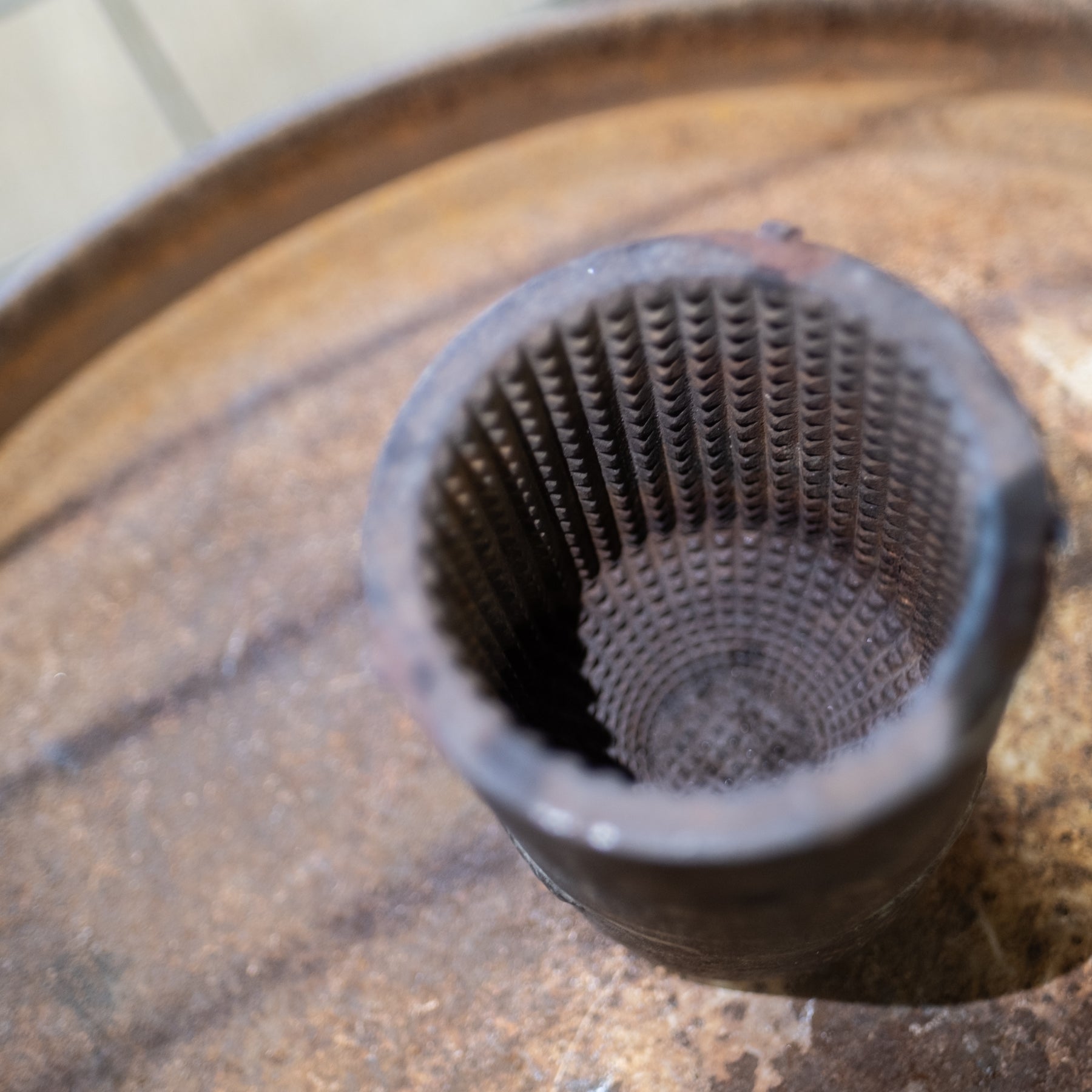
Tools of the Trade Tuesdays: Bubble Optic
Welcome to tools of the trade Tuesday, where we talk about all of the weird and wild apparatus we need – or have appropriated! – to make glass, to make interesting glass, to make glass interestingly.
Today we’re talking about the Bubble Optic mould we’ve used to amazing effect in our Cassiopeia Vase. ‘Controlled bubbles’ were a feature of 1940s and 1950s American glass, and Blenko Glass in particular – it isn’t uncommon to find one of our three dimple bubble ashtrays floating out and about in the world. “Controlled bubbles” as a phrase is specifically designed to set off these intentional bubbles in your glass from the otherwise-accidental bubbles in your glass.
Bubbles can come about in glass for a lot of different reasons. When unintended, they can be the result of an agitation in the thick medium of the hot glass in the furnace. Just like shaking up a can of soda, bubbles form when the thick liquid catches little pockets of air. Unlike your soda, where those bubbles pop and fizz almost immediately, bubbles rise up through hot glass at very, very slow rates.
Sometimes those air bubbles in glass are deeply intentional – as in our Cosmos Water Bottle series under former designers Andrew and Emma. In that method, we added baking soda to the equation precisely because of the effect it has – not unlike the elementary school science fair volcano, baking soda bubbles and fizzes and respirates, making a cloud of fascinating bubbles shooting through the glass.
When we use an optic mould, however, we think of them as “controlled bubbles.” That’s because the technique – bullicante in the Venetian glassworking parlance – consists of creating small divots in a gather of hot glass on the end of a blow pipe, and then gathering a new layer of glass over that. The air created by the small divots on the hot glass bubble is trapped by the second layer of glass – and when the piece is blown out and expanded, those bubbles blow out, and expand, too. In mould-blown pieces, this effect is stunning - it’s how and why the bubbles in the Cassiopeia Vase spiral beautifully upward through the vase from foot to lip.
This is achieved because we use an optic mould. Optic moulds, generally, are cone-shaped, open-topped metal moulds that have some kind of raised or impressed pattern on the inside of it. More common moulds are the ‘straight’ optic, which adds ribbing to a mould-blown piece, or the ‘diamond’ optic, which adds a quilted pattern and texture to the mould-blown piece.
For the inside of a controlled bubble - or ‘pineapple’ mould, depending on who you ask – the inside is like a waffle iron. When the hot glass expands into those regular lines of square depressions, it creates a regular, geometric pattern to the bubbles when glass is layered over them. The result? Divine!



